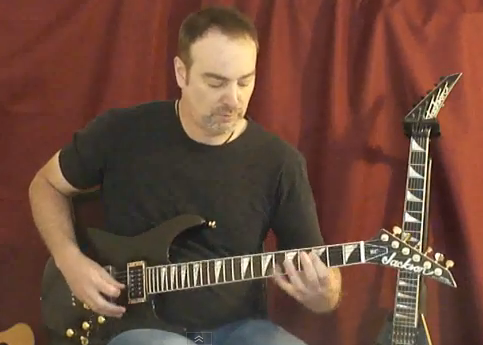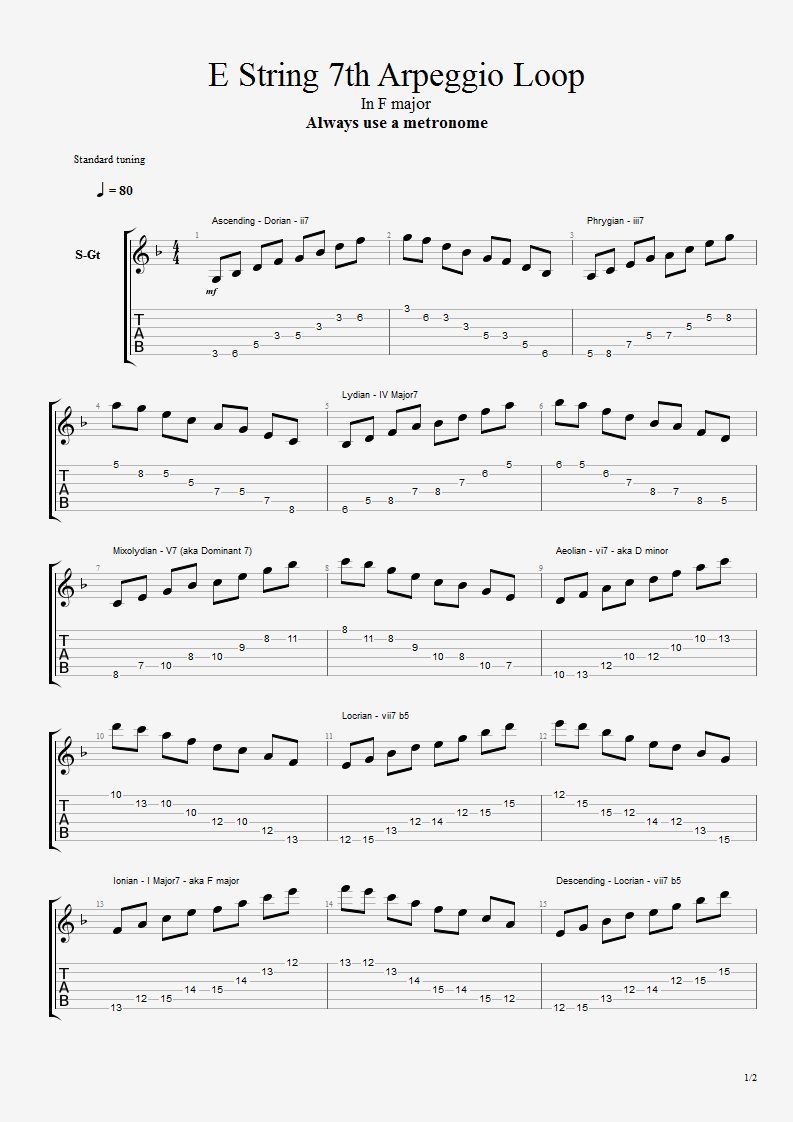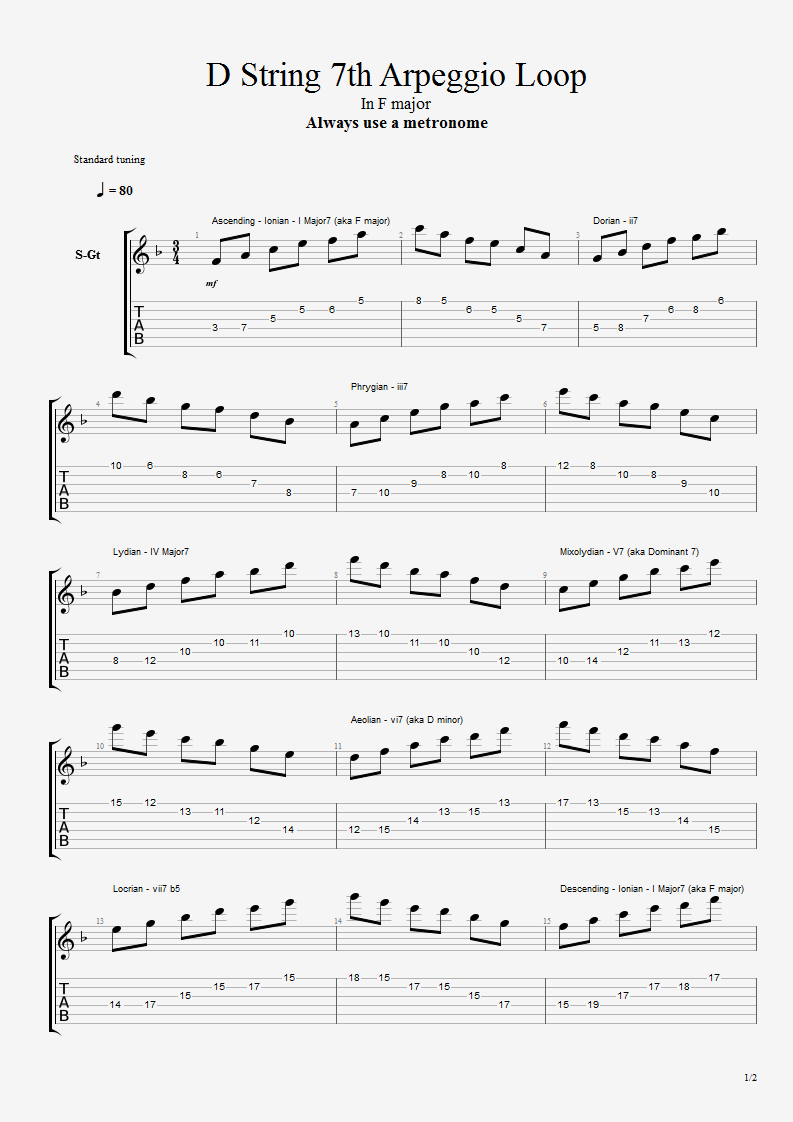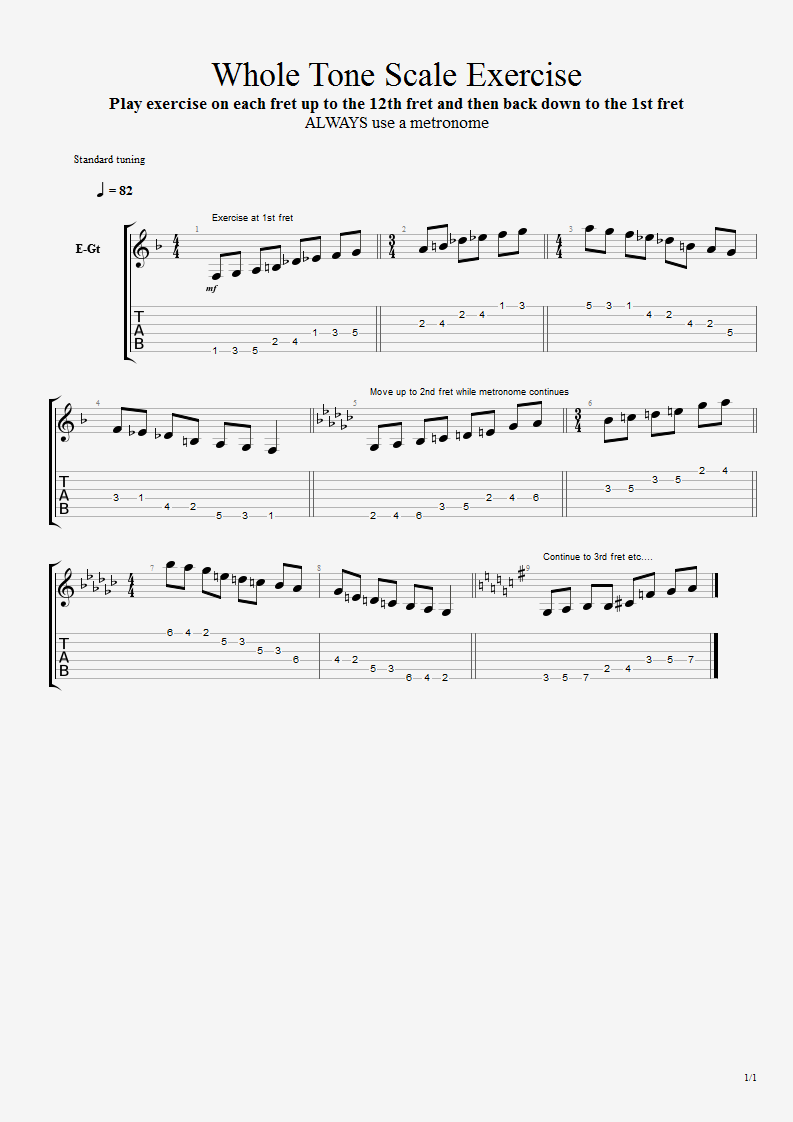Hey guys,
Here´s another cool lesson on guitar practicing routines
to develop a great technique, this is part 3 and the longest of the series!
hope it helps!
Lead Guitar Lesson – Practice Routine Exercises to Develop Great Guitar Technique Part 3
Hi, this is Rob Compagna for guitarcontrol.com and welcome to
Part III, our final part, of the daily practice exercise routine.
As promised before, this is going to deal with arpeggios plus
a couple other things that I’ll do afterwards which I have as
part of my daily practice routine. The reason why I use
arpeggios is it just helps when I’m playing over chords
when improvising. It’s great when you have these shapes
already burnt into your brain that you can just call-up
at a moment’s notice.
Just as in everything else, we’re doing this in the
key of F major and so the three arpeggio shapes are
based upon the 6th string, the 5th string and the 4th
string. Once again, the PDF files, the tab, is in the
links to this video. So let’s start with the ones
based on the 6th string.
Now, it’s in the key of F, but I start in dorian G
because if I have to play my arpeggio down in F,
in the first position, I start hitting open strings
and I don’t want to do that because I want to be
able to play that shape in any other part. If I
become used to playing F in open positions, if I’m
improvising in a different key, I’m a little stuck.
So you’ll see how it goes. We’re going to start in
dorian, which is G.
For those of you who are familiar with a harmonized
major scale, we’re really going to be using four
arpeggio shapes in each of these exercises. We’re
going to be doing a minor 7 arpeggio shape; we’re
going to be using a major 7 arpeggio shape, a dominant
7 arpeggio shape and a minor 7 flat V arpeggio shape.
So let’s start with our G minor 7 arpeggio shape.
Once again, the tab is present. So that’s that.
And then the A is going to be a minor 7th as well.
And then we’re going to go to a lydian, which is
going to be a major 7th. This is a B flat lydian.
And then we’re going to go to a C dominant 7.
Now we’re going to go to a D minor 7, which is
the aeolian or the relative minor. And then we’re
going to go to E minor 7 flat 5 shape. Then finally
finish it with the F major 7 shape.
And then in the exercise, it goes from the G all
the way up to the F, back down to the G. So I’m
going to try to do it here right now. Once again,
always practice it with a metronome. I’m not doing
it here with a metronome, but I’m just trying to give
you what it’s going to sound like when you do it.
So here we go.
So that’s it. There were a couple mistakes in there,
but when you practice always try to make it as clean
as possible. When you do any exercise, if you have
more than a couple errors, maybe you might want to
back off one metronome click. In these exercises it’s
not about trying to play as fast as possible; it’s
about trying to play as clean as possible so when
you do perform you sound clean. So that’s it.
Let’s move to the A string arpeggios. Since we’re in
the key of F and I don’t want to play open strings,
it’s going to start in C mixolydian. So the C dominant
7 arpeggio is… There’s the flat 7. And then we’re
going to move to the aeolian which is a minor 7. There’s
the flat 7 again. Then we have E minor 7 flat 5 and then
we’re going to our tonic, our ionian, F major 7. Then
to dorian, our G, which is a minor 7. And then A phrygian
which is another minor 7 shape. And then to lydian, B
flat lydian. Then we’re going to go back down the scale.
I’m going to try to do this again for you and let’s hope
we can do it without too many mistakes. Also, one thing
about this exercise is I’m always hitting the 7 below the
root note of that arpeggio I’m playing. It’s just to kind
of fit within the measures so we can use it with a
metronome. It’s all in the tabs. So here we go.
Not bad. There were a couple mistakes in there, but I’ll
take it for this recording. Anyway, I’m not perfect. It’s
all about practicing. It’s all about trying to be perfect.
You’re never going to be perfect, but that’s what you’re
going to try to do.
So we’re going to do the arpeggio shapes based upon the D
string, once again in F. Here we go, the F major 7 arpeggio
shape is this. Once again, it’s in the tab here. Then we’re
going to go to G dorian; that’s a minor 7 shape. A phrygian,
another minor 7 shape. And then we’re going to go to B flat
lydian which is a major 7 shape. Then we’re going to go to C
mixolydian, which is a dominant 7 shape slightly different.
It’s a fun one to play though. We go to D aeolian which is a
relative minor. That’s just a regular minor 7 shape as well.
Then we go to E locrian which is the minor 7 flat 5 shape.
That one is a little different, but it’s a lot of fun to play.
And then to top it off we have F ionian or F major 7, once again,
at the top. Then we’re obviously going to do it back down. Here
we go with the practice routine based upon the F major 7. Not bad.
Anyway, that’s the arpeggio shapes for my daily exercise.
Now, the next one we’re going to do is — and you can
do this to tailor for your own exercise. I throw in a
couple of kind of exciting sounding possibility kind of
scales or arpeggios. And for me, I do a whole tone and
then I do a diminished arpeggio. So those are kind of
cool things when you’re improving on stage or whatever
and you just pull out that scale and it kind of — whoa.
People are like what is that? So it’s pretty cool. It
just adds a little more spice to your playing.
One of the exercises I do it a whole tone scale and that
shape looks like this. I do it up to the 12th fret and
then back down. The tab is included on that one.
The last one that I do is I do a diminished arpeggio
shape based on the E string here. I do that actually
from the 2nd fret just because of the shifting in the
arpeggio, all the way up to the 12th and then back
down, and it’s like this.
So that’s it. Those are all the exercises I do every day,
with a combination of these three videos you see it all.
Also, I’m including a snapshot of a spreadsheet that I use
every day to track my progress. Now, if you closely look at
it you’ll see that some days I go down and some days I go
up and that’s okay. That’s natural. Don’t beat yourself up
when it goes down. This is all about improving your playing.
Think positively about it. It’s always great to be positive.
You’ll do much better as a player. You owe it to yourself
to talk positively. So you’ll see it in there.
I’ve also been using a Super Chops program that I’ve created
based upon a jazz Super Chops program and that’s been
helping me out a lot. If any of you are interested in that,
send me an email and we can start the program for you.
Anyway, thanks for dialing-in to guitarcontrol.com. The tabs
for everything are in the links to this video and I hope you
have a fantastic day and I hope you use this to make yourself
a better guitar player and get you where you want to be.
Take care; have a great day.











